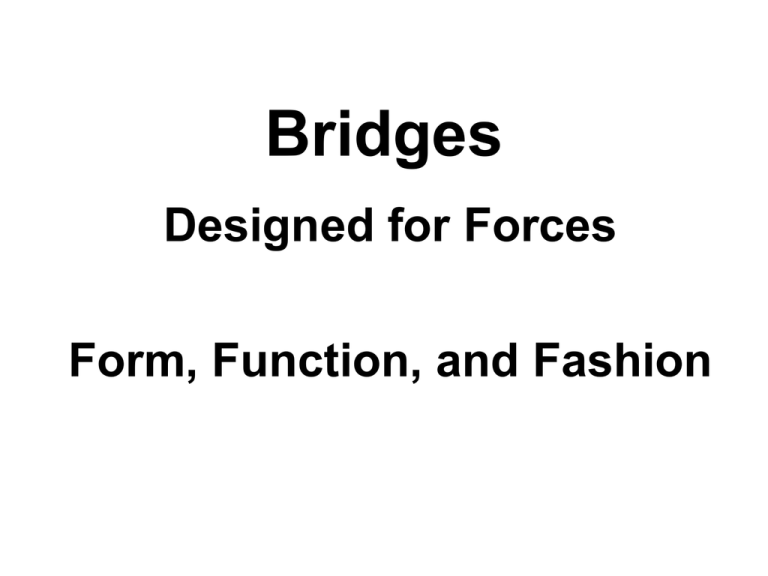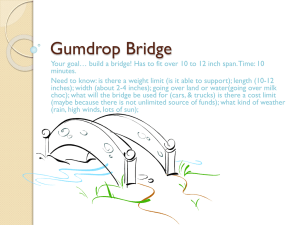toothpickbridges
advertisement

Bridges Designed for Forces Form, Function, and Fashion Arch Frame Bridges • Weight and forces are spread over the entire arch. • Date back to Roman Times • Good for making over rivers. Cable Stayed Bridge • Cables and Columns work together to support the weight and forces. • Cables become very tight when bridge is used. Girder Bridge • Columns take the weight and stress from the forces on the bridge. • Disadvantage: Many columns must be used. Rigid Frame Bridge • Strong bridge • Supports Weight and Forces well • Disadvantage: Costly because it takes lots of material to build. Suspension Bridge • Cable and Columns work together to support forces on bridge. • Few columns needed because of the cables. Truss Bridge • Stick like framing provides support for weight and forces on the bridge. • Lower cost than other bridges but less decorative. Toothpick Bridges Your Challenge • Build a 300-400 toothpick bridge out of standard, doublepointed toothpicks. • Use only white glue. No wood glue, Gorilla glue, or crazy/super glue. • Time will be about 1 week. • The bridge must be more than 20 cm long, but not longer than 25 cm • Bridge must have four sides • Height: at least one toothpick tall • Width: at least one toothpick wide • You must draw a preliminary drawing of your bridge before you start work on the bridge. Steps of Construction • Line toothpicks to make the length of the bridge. • Note: ends of toothpicks are staggered. • Bundles of 3 toothpicks are stronger. Providing Truss Supports • Framing of bridge should be done using triangles. • Triangles provide for excellent support when forces are applied. Footing of the Bridge • Note the use of angled supports. • Again the triangular design distributes the forces over a greater area.







